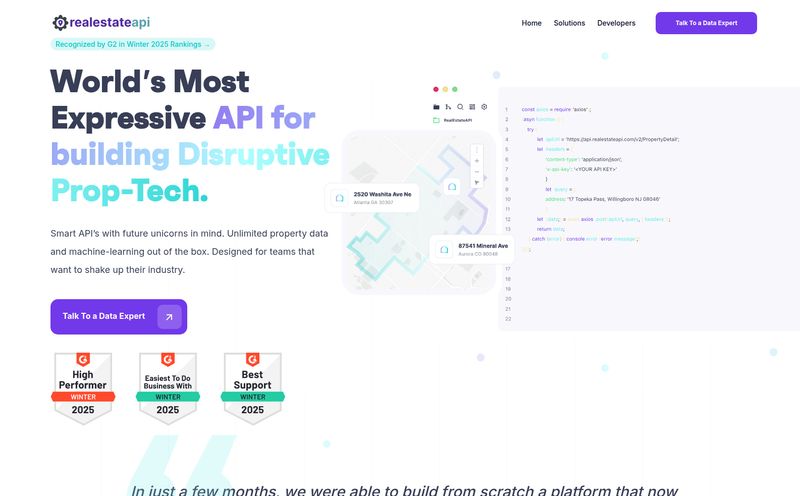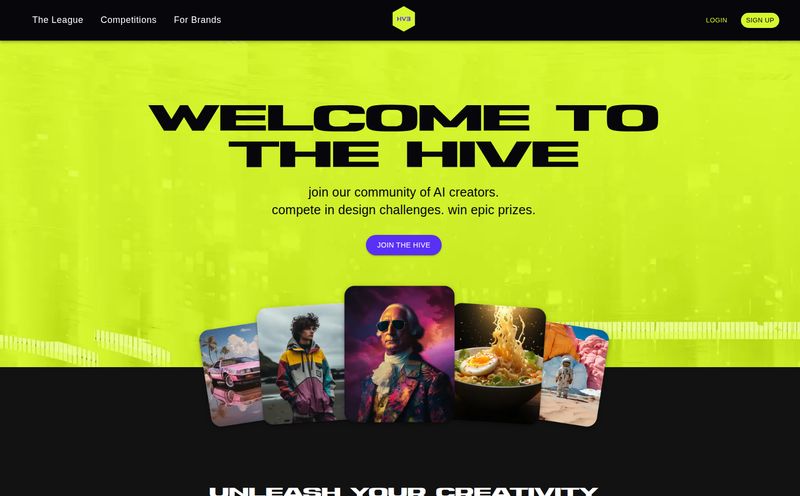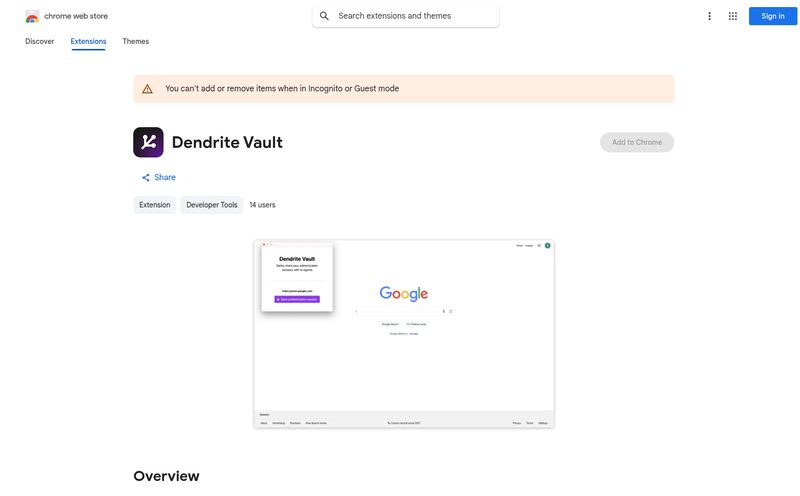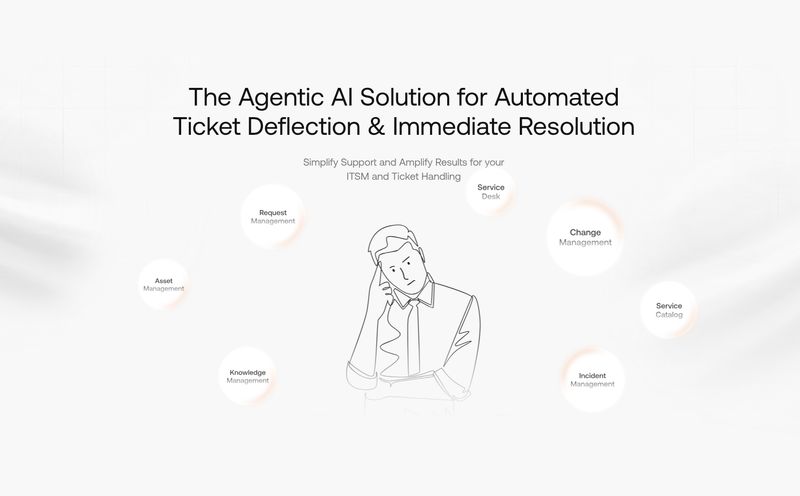If you're in marketing, product, or customer experience, you've probably lived the nightmare. I'm talking about the spreadsheet. The one with a thousand rows of customer feedback, copied and pasted from Trustpilot, app store reviews, Twitter mentions, and support tickets. You spend hours, maybe days, trying to tag themes, calculate sentiment, and find some—any—actionable insight. By the time you're done, you need a strong coffee and a new set of eyes.
I’ve been there. I once spent an entire week trying to manually analyze feedback for a product launch, and my final report was basically a bunch of word clouds and a vague feeling of dread. We’re told to be “data-driven,” but most of the time we’re just data-drowning.
So, when I come across a platform that claims to do all of that heavy lifting with AI, my inner skeptic raises an eyebrow. But my exhausted inner marketer leans in, whispering, “Tell me more.” Today, that platform is Pivony. They talk a big game about closing the “empathy gap” with AI-powered consumer intelligence. But can it really deliver? Let’s find out.
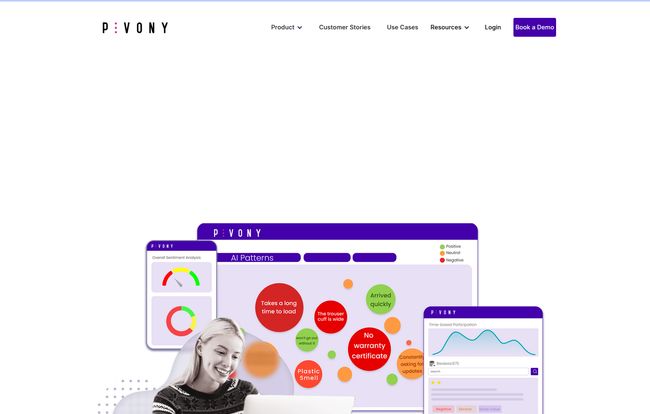
Visit Pivony
So, What is Pivony, Really?
Forget the fancy jargon for a minute. At its core, Pivony is an AI-powered listening tool. It connects to all the places your customers are talking about you—review sites, social media, surveys, you name it—and pulls all that feedback into one central place. But here’s the magic part: instead of just showing you a wall of text, its AI reads and understands everything. It automatically figures out the main topics people are discussing (like 'battery life' or 'customer service'), tracks whether the sentiment is positive or negative, and shows you what’s trending.
Think of it as having a team of a thousand junior analysts working for you 24/7, tirelessly reading every comment and bubbling up the most important stuff. It's designed to turn messy, qualitative data into clean, quantitative insights you can actually use to make decisions. And for someone who hates spreadsheets, that sounds pretty darn good.
Why Consumer Intelligence is More Than a Buzzword
Okay, “consumer intelligence” sounds a bit corporate, doesn't it? But it's just a new name for an old idea: listening to your customers. The difference is that now, we have the technology to listen at a massive scale. And it matters. A lot. When you truly understand what your customers love, hate, and wish for, you can build better products, craft marketing campaigns that actually land, and improve your customer service in ways that build loyalty.
I saw on their site that companies like Vodafone and Allianz are using Pivony. These aren't small startups throwing spaghetti at the wall. These are global giants. When they invest in a tool, it's because it has a direct line to improving their bottom line. It’s a powerful signal that understanding customer voice is no longer a “nice to have.” It’s a competitive necessity.
Pivony’s Standout Features: The Grand Tour
Alright, let's get into the nitty-gritty. What does this platform actually do? I poked around their site and documentation, and a few things really jumped out at me.
AI-Powered Analytics That Actually Make Sense
This is the heart of Pivony. Most sentiment analysis tools are pretty basic: they tell you if a comment is positive, negative, or neutral. Cool. But why is it negative? Pivony goes deeper by identifying topics automatically. For instance, it can differentiate between complaints about an app’s “slow performance” and frustration with its “confusing user interface.” This is huge. It moves you from knowing that people are unhappy to knowing why they're unhappy, which is the only way to fix the problem.
No-Code? No Problem.
I almost scrolled past this, but it’s one of the most important features. Pivony is a no-code platform. This means you don’t need to be a developer or have a data science degree to use it. You connect your data sources through simple integrations, and the platform does the rest. Their website even claims you can “start capturing insights in less then 30 minutes.” If that's true, it’s a game-changer for marketing and product teams who are tired of filing tickets with the engineering department and waiting weeks for a result.
All Your Feedback in a Single Dashboard
The pain of toggling between ten different tabs is real. Pivony solves this by integrating with a ton of different channels. Think App Store reviews, social media mentions, NPS surveys, and support tickets all flowing into one unified, customizable dashboard. You get a single source of truth for customer opinion. This allows you to spot cross-channel trends you’d otherwise miss—like if a bug mentioned in support tickets is also starting to drive down app store ratings.
Spotting Trends Before They Become Tidal Waves
Pivony also includes trend detection and anomaly alerts. This is the proactive piece of the puzzle. The platform can notify you if there’s a sudden spike in negative comments about a specific feature after a new release. It’s like an early warning system for your brand reputation. Instead of finding out about a problem when it hits the tech news, you can get ahead of it, communicate with your customers, and work on a fix. This feature alone could save a company from a major PR headache.
The Good, The Bad, and The Realistic
No tool is perfect, and it's my job to be a little critical. Based on the information available and my experience with similar platforms, here's my balanced take.
What I'm Genuinely Excited About
The AI-generated topic analysis is the clear winner. It's the kind of deep insight that can truly drive strategy. The no-code approach is a massive plus for accessibility, empowering the people who are closest to the customer to get the answers they need directly. The idea of customizable, multi-channel dashboards is also incredibly appealing for anyone who has to present reports to leadership.
Some Things to Keep in Mind
Like any AI system, its effectiveness hinges on the data you feed it. As the old saying goes, garbage in, garbage out. If your customer feedback volume is very low or the quality is poor, the insights might be limited. The site also mentions that some features may require help from a “Pivony Insight Manager,” which suggests there could be a bit of a learning curve or perhaps a need for a higher service tier. Finally, the mention of a “yearly membership” hints that this is likely an enterprise-level tool, which might put it out of reach for very small businesses or solopreneurs.
The Big Question: What Does Pivony Cost?
Ah, the pricing question. If you’ve been searching for a price list, you won’t find one. Pivony uses a “Book a Demo” model. Don't be alarmed; this is standard practice for sophisticated B2B SaaS platforms. It usually means the pricing is customized based on your needs—things like the number of data sources you want to connect, the volume of feedback you process, and the level of support you require.
My advice? Don't let the lack of a public price tag scare you off. If the problems I've described resonate with you, a demo is the best way to see if the tool is a good fit and get a concrete quote for your specific situation.
Is Pivony the Right Tool For You?
After digging in, I'm genuinely optimistic about Pivony. It seems to tackle a very real, very painful problem for a lot of companies. It's not just another analytics tool; it's a platform designed to bridge the gap between a business and its customers.
If you're drowning in feedback and struggling to turn customer noise into an actionable signal, Pivony is absolutely worth a look. It promises to save you time, deliver deeper insights, and help you build a more customer-centric business. And in today's market, that’s not just an advantage—it's how you survive and thrive.
Frequently Asked Questions about Pivony
- 1. What is Pivony primarily used for?
- Pivony is primarily used for consumer intelligence. Businesses use it to collect and analyze customer feedback from multiple sources (like reviews, surveys, and social media) to understand customer experience, track brand reputation, conduct competitor analysis, and measure campaign success.
- 2. Is Pivony difficult to set up?
- No, Pivony is designed as a no-code platform. This means you can connect your data sources and start analyzing feedback without needing technical skills or help from a developer. They claim you can be up and running in under 30 minutes.
- 3. How does Pivony's AI analysis work?
- Pivony's AI goes beyond simple positive/negative sentiment. It uses Natural Language Processing (NLP) to understand the context of the feedback and automatically identifies and groups comments into specific topics (e.g., 'Pricing', 'Shipping', 'UI Design'), giving you a much more detailed view of what customers are talking about.
- 4. Can Pivony integrate with tools I already use?
- Yes, the platform is built to integrate with various data sources and business tools. The goal is to bring all your customer feedback into one central hub for unified analysis. For specific integrations, it's best to check with them during a demo.
- 5. How much does Pivony cost?
- Pivony does not list public pricing. It operates on a quote-based model where you request a demo to get pricing tailored to your company's needs. This is common for enterprise-grade software and often involves a yearly membership.
- 6. What kind of companies use Pivony?
- Pivony is trusted by over 700 businesses, including large enterprises like Vodafone, Allianz, and Masuno. This indicates its suitability for companies that handle a significant volume of customer feedback and are serious about data-driven decision-making.
